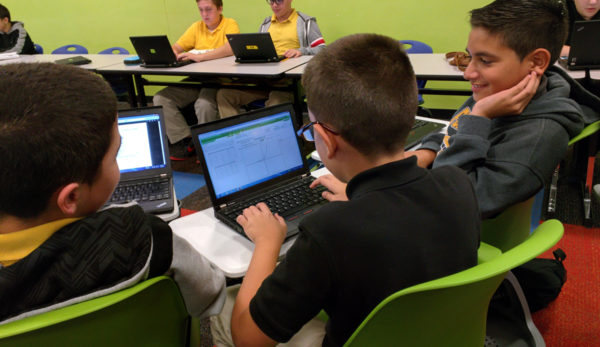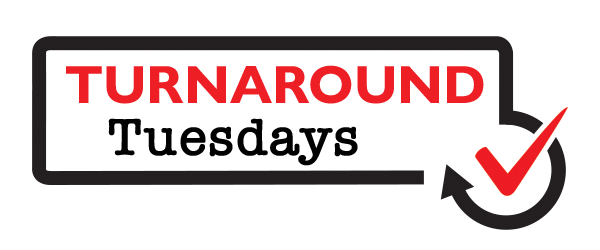[Editor’s note: Welcome to our newest feature, Turnaround Tuesdays. Each week, we will share a story about how a district used technology in schools to improve something. Come back each week for insight on transforming everything from reading scores to wireless network performance.]
Demographics:
Miami-Dade County (FL) Public Schools (MDCPS) is the fourth-largest school district in the United States, comprised of 392 schools, 345,000 students, and over 40,000 employees. Located at the southern end of the Florida peninsula, the school district stretches over 2,000 square miles of diverse and vibrant communities ranging from rural and suburban to urban cities and municipalities. A truly global community, district students speak 56 different languages and represent 160 countries. Currently, the graduation rate of MDCPS is 89 percent.
Biggest challenge:
MDCPS’ challenge was to increase graduation rates so that at least 90 percent of students will graduate with a standard high school diploma by 2020. Additionally, that when they graduate, they are college and career ready to face the world in the 21st century.
To meet this challenge, we needed to address the fact that digital deserts exist within neighboring communities, and students in schools across the county may not have equitable access to modern technology at home or at school. The world is changing at a very rapid pace; the skills students will need to be successful required us to rethink how education should be delivered and what tools would be used to prepare them. Students in any school or district, regardless of zip code or economic situation, deserve the opportunity to have access to the tools and resources that will prepare them for the future as 21st-century citizens.
Solution:
One of the district’s strategies to address student achievement through the use of technology was the implementation of the Digital Convergence initiative. The initiative involved three projects:
- wireless networks at schools
- the installation of interactive whiteboards in all classrooms that lacked this technology
- the deployment of mobile devices.
The wireless upgrade ensured that all schools had school-wide internet access; the interactive whiteboards provided teachers with a tool to enhance lessons with interactive components that would improve student engagement; and the deployment of mobile devices would place technology in students’ hands for school and home use, so they could access the collection of district-licensed online resources and digital content available to all students.
In deploying the devices, the district targeted grade levels and courses such as 7th-grade civics, 9th- and 10th-grade English, and middle school math. Students in those courses and grade levels—at all schools—were given access to the technology. Additionally, mobile devices were provided to additional subject areas, including laptops to all elementary schools.
Teachers in all the targeted subject areas and grade levels were provided with professional development, not only on the functionality of the new devices but on strategies for effective technology integration into classroom instruction.

From 2014 to 2018, the subject areas and grade levels in which the district deployed mobile devices have shown consistent increase in student achievement on state assessments and end-of-course assessments. While the introduction of these technologies cannot be credited solely for the increase in student performance in the targeted subject areas, it is evident that the introduction of new technologies into the instructional process did not negatively impact student performance or classroom instruction.
To date, the district has installed over 30,000 access points and completed the wireless networks at schools, deployed over 154,000 mobile devices, installed 13,949 interactive boards in classrooms, and trained over 19,929 teachers. For the 2018-19 school year, the district has recently ordered an additional 18,000 mobile devices and will be installing roughly 500 new interactive boards.
Lessons learned:
- Persistence. Persistence in painstakingly planning and staying the course when we encountered barriers or roadblocks. Persistence in our vision for any technology deployment and making sure that the technology innovation under consideration supports our ultimate academic goals.
- Plan extensively. We were planning for over two years before one device was purchased and deployed to schools.
- Start slow. Establish realistic and scalable goals. Let these goals drive the plan for your transformation. Assess your needs and the skill sets of employees. Understand that your employee’s technology skills will play a factor in the logistics of any technology deployment and professional development plan.
Next steps:
The district will continue to expand on the success of the Digital Convergence initiative. Additional mobile devices and interactive boards will be deployed to schools that may still have a need and digital content is continuously acquired to provide students with a greater collection of online content. After all, our ultimate goal is 100-percent graduation rate where all students have the opportunity to acquire a high-quality education that will lead them to become productive citizens in our society.
Next week:
Come back and see how a district turned around its lowest-performing schools
- High school students say AI will change the workforce - April 18, 2024
- Motivating students using the Self-Determination Theory - April 17, 2024
- Michigan Virtual’s statewide workgroup releasing AI guidance for K-12 educators - April 17, 2024


